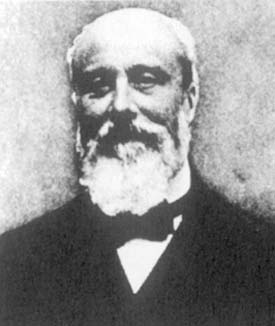Pierre Duhem facts for kids
Quick facts for kids
Pierre Duhem
|
|
|---|---|
 |
|
| Born |
Pierre Maurice Marie Duhem
9 June 1861 Paris, France
|
| Died | 14 September 1916 (aged 55) Cabrespine, France
|
| Education | École Normale Supérieure (diploma, 1882) |
| Era | 19th-century philosophy |
| Region | Western philosophy |
| School | Continental philosophy French historical epistemology Conventionalism |
|
Main interests
|
Thermodynamics, philosophy of science, history of science |
|
Notable ideas
|
Clausius–Duhem inequality Gibbs–Duhem equation Duhem–Margules equation Duhem–Quine thesis Confirmation holism Thermodynamic potential |
|
Influences
|
|
|
Influenced
|
|
Pierre Maurice Marie Duhem (9 June 1861 – 14 September 1916) was a French scientist. He was a physicist who studied thermodynamics, how liquids move (called hydrodynamics), and how things stretch (the theory of elasticity).
Duhem was also a historian of science. He is famous for his work on the European Middle Ages, which helped create the study of medieval science. As a philosopher of science, he is known for his ideas about how experiments don't always give clear answers (this is part of the Duhem–Quine thesis).
Contents
Duhem's Work in Physics
Among scientists, Duhem is best known for his work on chemical thermodynamics. This is the study of how heat and energy relate to chemical changes. He helped develop important ideas like the Gibbs–Duhem and Duhem–Margules equations.
Duhem believed that all physical events, like how machines work, electricity, and chemistry, could be understood using the rules of thermodynamics. He wrote a book called Traité de l'Énergétique (1911) to explain this idea.
Ideas About Atoms and Relativity
Like another scientist named Ernst Mach, Duhem was unsure about whether atoms were real or useful. He didn't agree with scientists who explained heat laws using the movements of many tiny atoms.
Duhem also disagreed with Albert Einstein's theory of relativity. In 1914, Duhem said that Einstein's theory made physics confusing. He felt it "overthrow[s] all the doctrines" about space, time, and movement.
Exploring Science History

Duhem is very well known for his work on the history of science. He wrote a ten-volume book called Le système du monde (The System of World). This book looked at ideas about the universe from ancient Greece to the time of Copernicus.
Unlike many historians before him, Duhem showed that the Roman Catholic Church helped science grow during the Middle Ages. He found that medieval thinkers like John Buridan, Nicole Oresme, and Roger Bacon were very advanced. He thought they were the true founders of modern science. Duhem believed they had many ideas that came before Galileo Galilei and other later scientists. He concluded that modern science grew step-by-step from ideas taught in medieval schools.
Duhem also made the idea of "saving the phenomena" popular. This means creating a scientific theory that explains what we observe, even if we don't fully understand why it happens.
Duhem's Philosophy of Science
In the philosophy of science, Duhem is famous for saying that you can't easily prove a scientific idea wrong with just one experiment. This is because when you test an idea, you are actually testing a whole group of ideas and assumptions at once. This concept is called confirmation holism.
Duhem wrote about these ideas in his 1906 book, The Aim and Structure of Physical Theory. He disagreed with Isaac Newton's idea that his law of gravity was simply figured out from observations. Duhem pointed out that Newton's theory actually showed small differences from Kepler's laws of planetary motion. This meant Newton's law couldn't have been directly proven by Kepler's observations alone.
How Science and Faith Connect
In his book, Duhem also wrote about how his ideas about science relate to religion. He believed that science and religion don't conflict because they talk about different things. Science describes mathematical ideas that don't have a physical existence, while religion talks about objective reality. Since they don't share the same terms, they can't truly disagree or agree.
However, Duhem thought it was important for religious thinkers to understand science well. This would prevent them from using scientific ideas incorrectly in their religious discussions. Even though Duhem was a strong Catholic, he wanted his scientific work to be judged on its own. He didn't want it to be seen as "Catholic science" or influenced by his faith.
Selected Works
Books
- (1886). Le Potentiel Thermodynamique et ses Applications (Thermodynamic Potential and its Applications).
- (1891–1892). Leçons sur l'Électricité et le Magnétisme (Lessons on Electricity and Magnetism).
- (1906). La Théorie Physique. Son Objet, sa Structure (The Aim and Structure of Physical Theory).
- (1908). Sauver les Phénomènes. Essai sur la Notion de Théorie Physique de Platon à Galilée (To Save the Phenomena, an Essay on the Idea of Physical Theory from Plato to Galileo).
- (1913–1959). Le Système du Monde. Histoire des Doctrines Cosmologiques de Platon à Copernic (The System of the World. History of Cosmological Doctrines from Plato to Copernicus).
Works in English translation
- (1903). Thermodynamics and Chemistry. A Non-mathematical Treatise for Chemists and Students of Chemistry.
- (1969). To Save the Phenomena, an Essay on the Idea of Physical Theory from Plato to Galileo.
- (1991). The Aim and Structure of Physical Theory.
See also
 In Spanish: Pierre Duhem para niños
In Spanish: Pierre Duhem para niños

